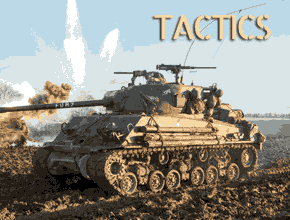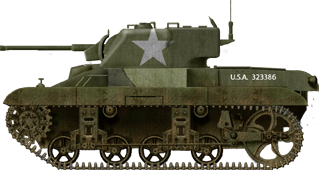 The M22 Locust was an American-designed airborne light tank developed during World War II for use by airborne forces. It was designed to be lightweight and compact enough to be transported by gliders or cargo planes, allowing airborne troops to have armored support upon landing. The M22 Locust, officially Light Tank (Airborne), M22, was an American-designed airborne light tank which produced to 830 machines during World War II. Development started in 1941 after the British War Office requested the US government for a purpose-built airborne light tank, light enough to be transported by gliders for British airborne forces. The War Office selected initially the connverted Light Tank Mark VII Tetrarch but it was not purpose-built and the US design was supposed to replace it. The US Army Ordnance Department selected Marmon-Herrington to design the prototype in May 1941, designated the Light Tank T9 (Airborne) to be initlally transported underneath a Douglas C-54 Skymaster and fit inside a General Aircraft Hamilcar glider...
The M22 Locust was an American-designed airborne light tank developed during World War II for use by airborne forces. It was designed to be lightweight and compact enough to be transported by gliders or cargo planes, allowing airborne troops to have armored support upon landing. The M22 Locust, officially Light Tank (Airborne), M22, was an American-designed airborne light tank which produced to 830 machines during World War II. Development started in 1941 after the British War Office requested the US government for a purpose-built airborne light tank, light enough to be transported by gliders for British airborne forces. The War Office selected initially the connverted Light Tank Mark VII Tetrarch but it was not purpose-built and the US design was supposed to replace it. The US Army Ordnance Department selected Marmon-Herrington to design the prototype in May 1941, designated the Light Tank T9 (Airborne) to be initlally transported underneath a Douglas C-54 Skymaster and fit inside a General Aircraft Hamilcar glider...

Key Specifications:

- Crew: 3 (Commander, Gunner, Driver)
- Weight: ~7.4 tons
- Armor: 9.5–25 mm
- Armament: Main Gun 37mm M6 gun, sec.30 cal. M1919A4 LMG
- Engine: Lycoming O-435T (6-cylinder, air-cooled, 162 hp)
- Speed: ~40 mph (64 km/h)
- Range: ~180 miles (290 km)
Development & Service:

Developed by the U.S. in 1941-1942, it was designed to support airborne infantry by being delivered via Hamilcar glider or airdrop. However, its thin armor and light firepower limited its effectiveness. Used in Operation Varsity (March 1945) by British forces, but performance was disappointing due to mechanical failures and vulnerability to enemy fire. It was retired post-war, with limited use by other countries such as Egypt. Why It Failed: Fragile Design: The thin armor provided minimal protection against enemy fire. Light Armament: The 37mm gun was largely ineffective against German tanks. Transport Issues: Deploying it via glider was challenging and risky. Limited Role: Airborne forces often relied more on anti-tank weapons than small tanks. Despite its shortcomings, the M22 Locust remains a unique attempt at creating an airborne tank and is an interesting part of WWII military history.

From an Amilcar Glider
specifications | |
| Dimensions (L-w-H) | 12’11” x 7’1” x 6’1” (3.96 x 2.24 x 1.84 m) |
| Weight | 7.4 tons (74.3 tonnes) |
| Crew | 3 (driver, gunner, commander/loader) |
| Propulsion | Lycoming O-435T horizontally opposed 6-cylinder 4 cycle petrol/gasoline engine, 192 hp |
| Top speed | 35 mph (56.3 km/h) |
| Suspensions | VVSS |
| Range | 110 miles (177 km) |
| Armament | 37 mm (1.46 in) Gun M6/M53 turret +30 cal. (7.62 mm) MG M1919A4 |
| Armor | 9.5 mm (0.37 in) to 25.4 mm (1 in) |
The M22 Locust on Tank Encyclopedia, by Mark Nash
The M22 Locust came about in 1941 as a request from the British War Office for a bespoke air-deployable tank. Until this point, the British had been using the Light Tank Mk.VII Tetrarch for the role. The Tetrarch did not start out as an airborne tank however, so it was believed to be inferior to a vehicle dedicatedly designed for this role.The United States Ordnance Department received the request and began work on finding a suitable designer and builder. The famous J. Walter Christie was first on their list, who in turn produced a prototype in 1941. This prototype did not meet the size requirements, however, so the Ordnance Department looked elsewhere. The Marmon-Herrington Company then came forward with their own design. The design was approved and the Company produced a wooden prototype in August of 1941 which was designated ‘Light Tank T9’...
Gallery

M22 Locust
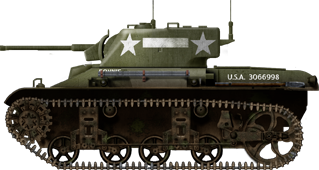
M22 Locust without side skirts

Locust in Bitish service






Read More/Src
Books
Presidio Press, Stuart, A History of the American Light Tank, Volume 1, R.P. HunicuttOsprey Publishing, New Vanguard #153: M551 Sheridan, US Airmobile Tanks 1941-2001
Links
warspot.ruwww.tank-hunter.com
tankmuseum.org
en.wikipedia.org
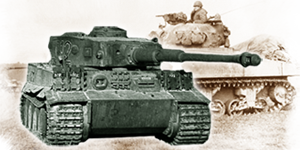
WW2 Tanks




























WW2 tanks posters
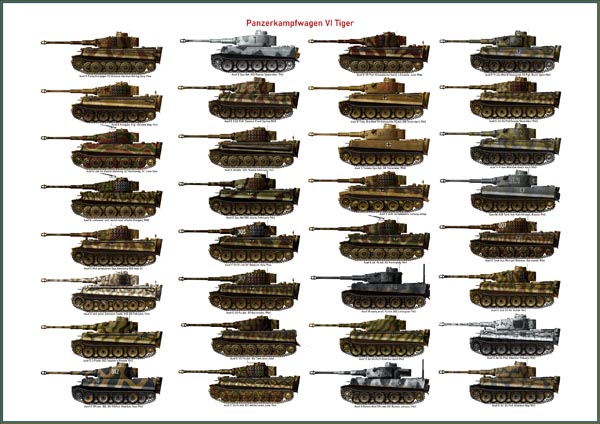
All Tiger tanks liveries.

Panther liveries and variants

WW2 Armour - All tanks
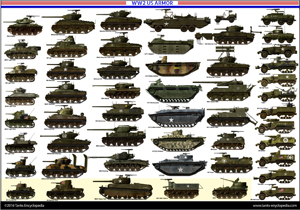

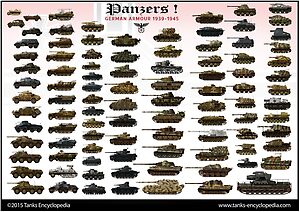








Tanks aces and single tanks series

Find more there

Museums, Movies, Books & Games
The Tanks and Armor in pop culture
Tanks and armored vehicles in general are only really grasped when seen first person: The mass, the scale, it's all there. Explore also the way tanks were covered in the movie industry, in books and in video games.Movies:
Best tanks movie on warhistoryonline.com
On imdb.com
On bestsimilar.com/
miltours.com
liveabout.com/
watchmojo.com
Video Games:
pcgamesn.com
historyhit.com
levvvel.com
vg247.com/best-tank-games
mmobomb.com/
alienwarearena.com
